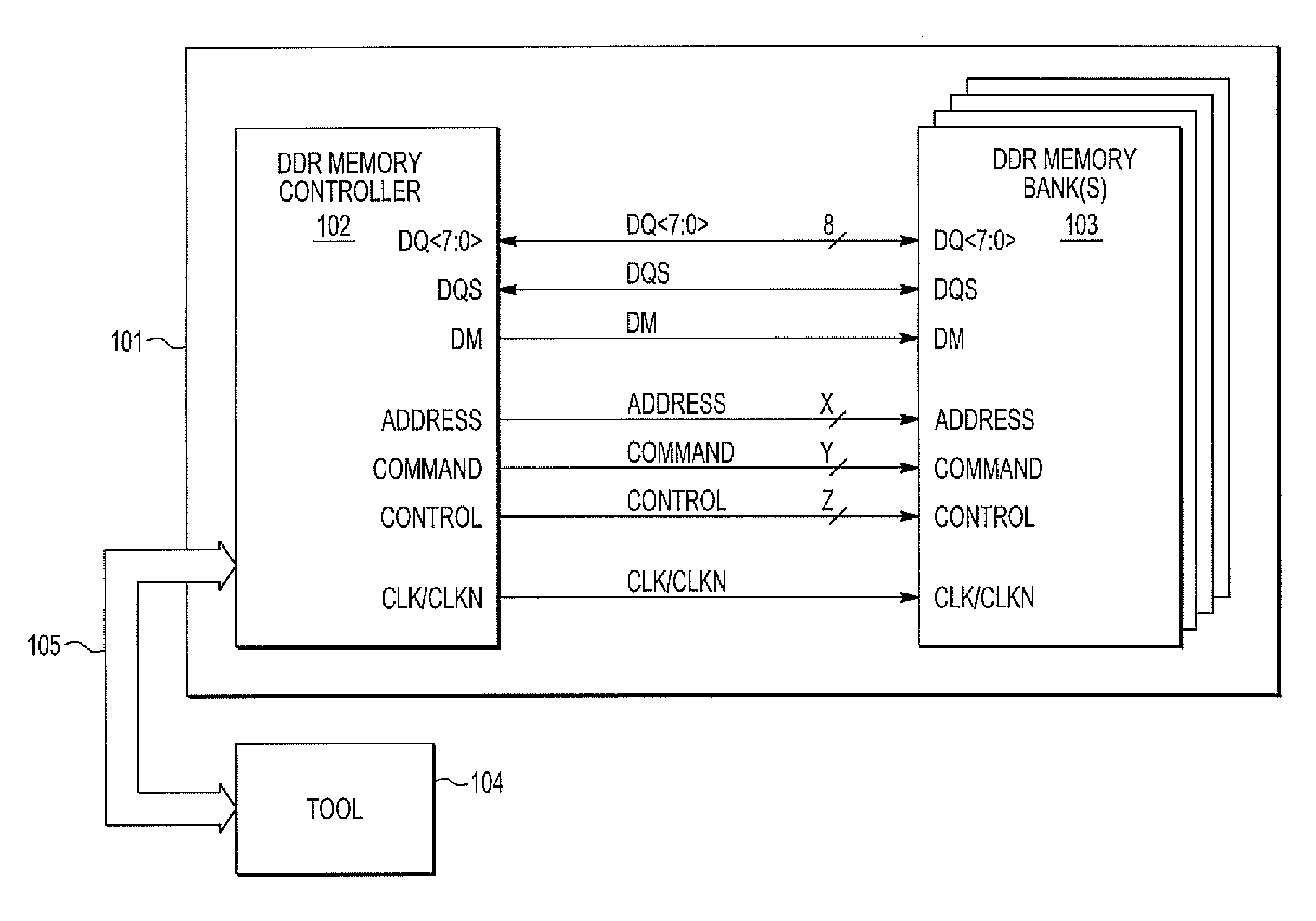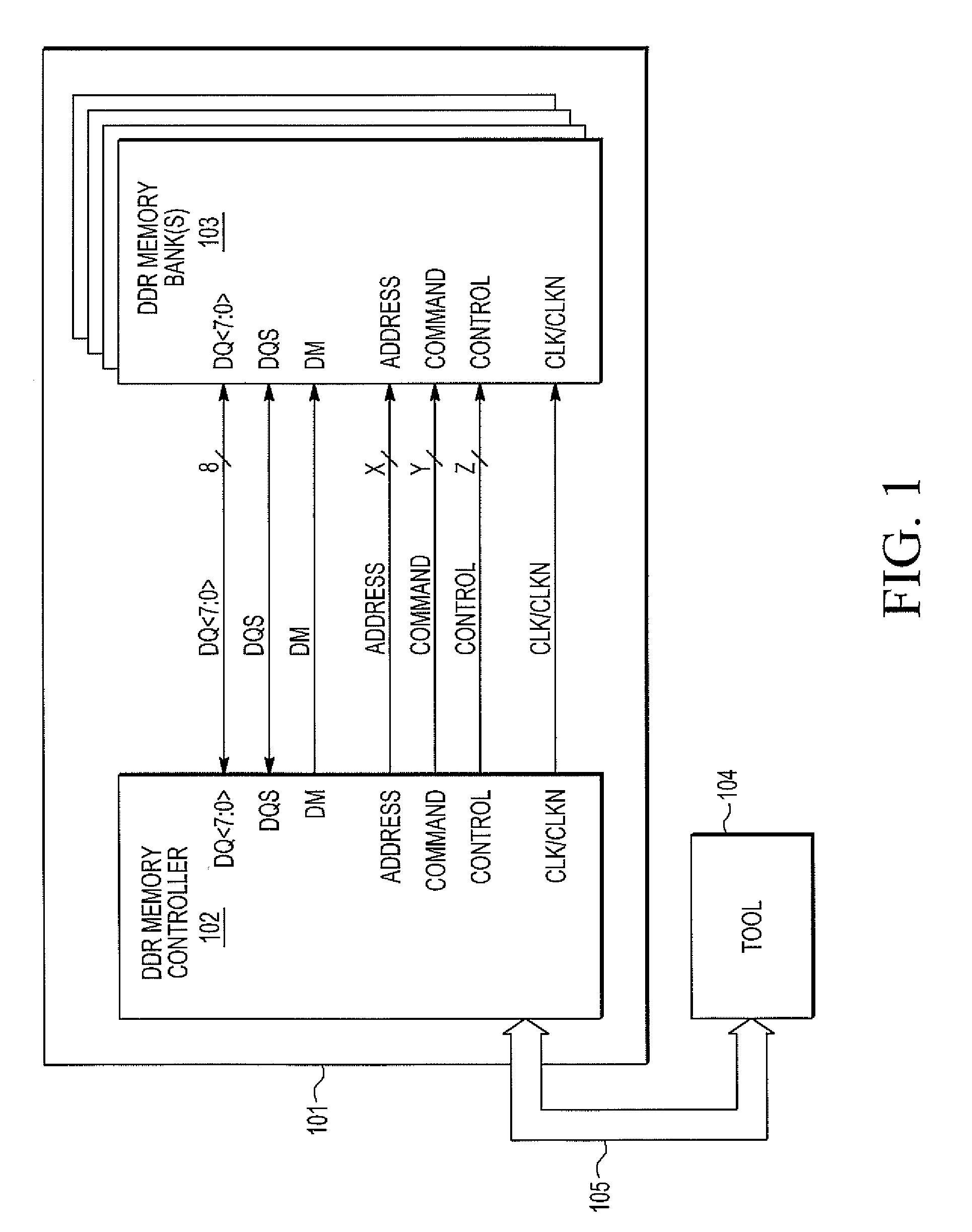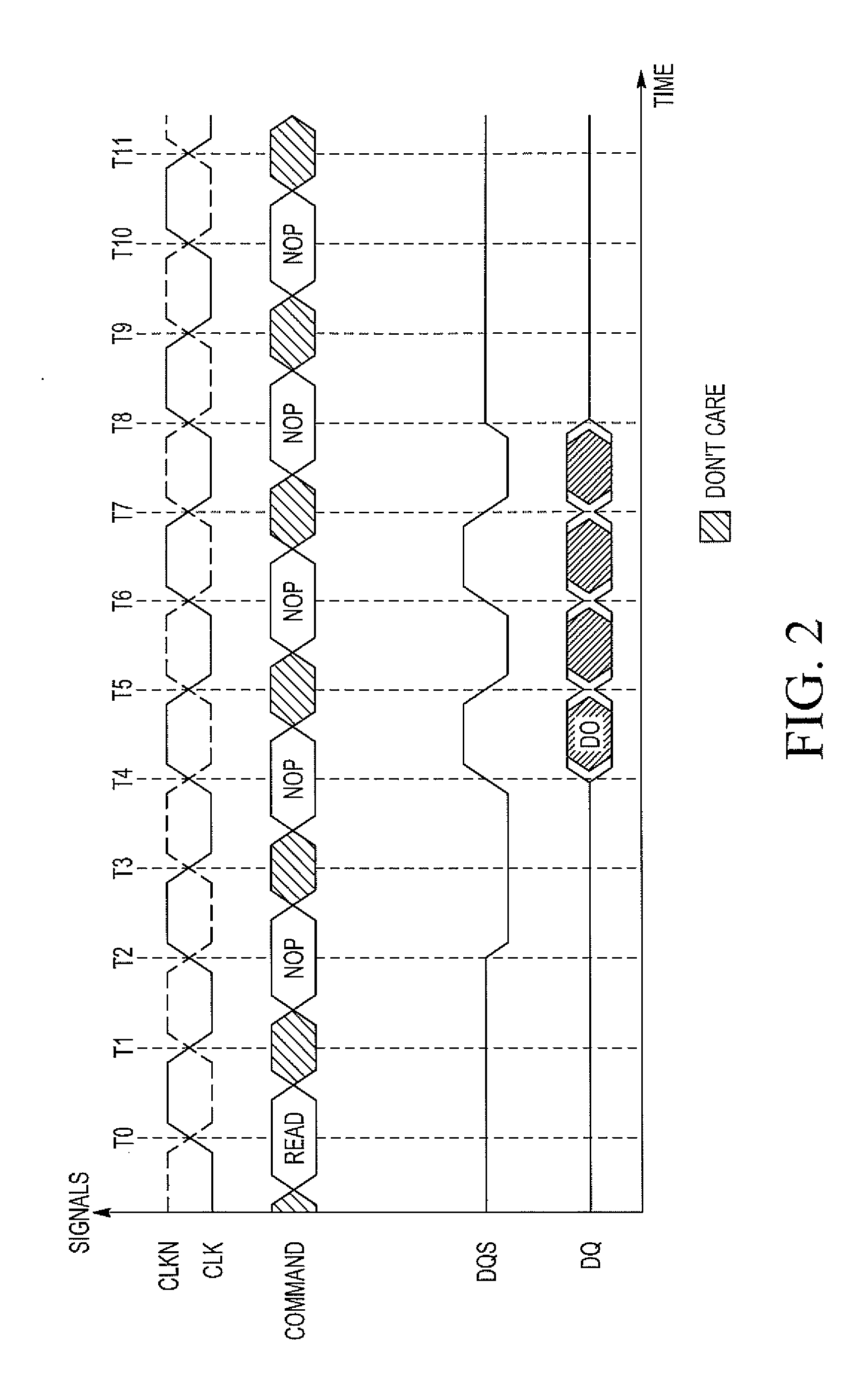Margin tool for double data rate memory systems
a memory system and data rate technology, applied in the field of circuits, can solve the problems of low phase-locked loop (“pll”) jitter, signal integrity of ddr memories, and increasing criticality of fast register propagation delay times
- Summary
- Abstract
- Description
- Claims
- Application Information
AI Technical Summary
Benefits of technology
Problems solved by technology
Method used
Image
Examples
Embodiment Construction
[0012]In a typical non-DDR memory system, both the memory controller and memory transmit or capture data in response to a single system clock. Compared to single data rate (“SDR”) DRAM, the DDR DRAM interface makes higher transfer rates possible by more strict control of the timing of the electrical data and clock signals. However, implementations often have to use schemes such as phase-locked loops and self-calibration to reach the required timing accuracy. The interface uses double pumping (transferring data on both the rising and falling edges of the clock signal) to lower the clock frequency. The name “double data rate” refers to the fact that a DDR DRAM with a certain clock frequency achieves nearly twice the bandwidth of a SDR DRAM running at the same clock frequency, due to this double pumping.
[0013]As memory designers have moved to a DDR implementation of such systems, they achieved a 2× effective increase in the bit rate of the system. However, this effectively cut the vali...
PUM
 Login to View More
Login to View More Abstract
Description
Claims
Application Information
 Login to View More
Login to View More - R&D
- Intellectual Property
- Life Sciences
- Materials
- Tech Scout
- Unparalleled Data Quality
- Higher Quality Content
- 60% Fewer Hallucinations
Browse by: Latest US Patents, China's latest patents, Technical Efficacy Thesaurus, Application Domain, Technology Topic, Popular Technical Reports.
© 2025 PatSnap. All rights reserved.Legal|Privacy policy|Modern Slavery Act Transparency Statement|Sitemap|About US| Contact US: help@patsnap.com



